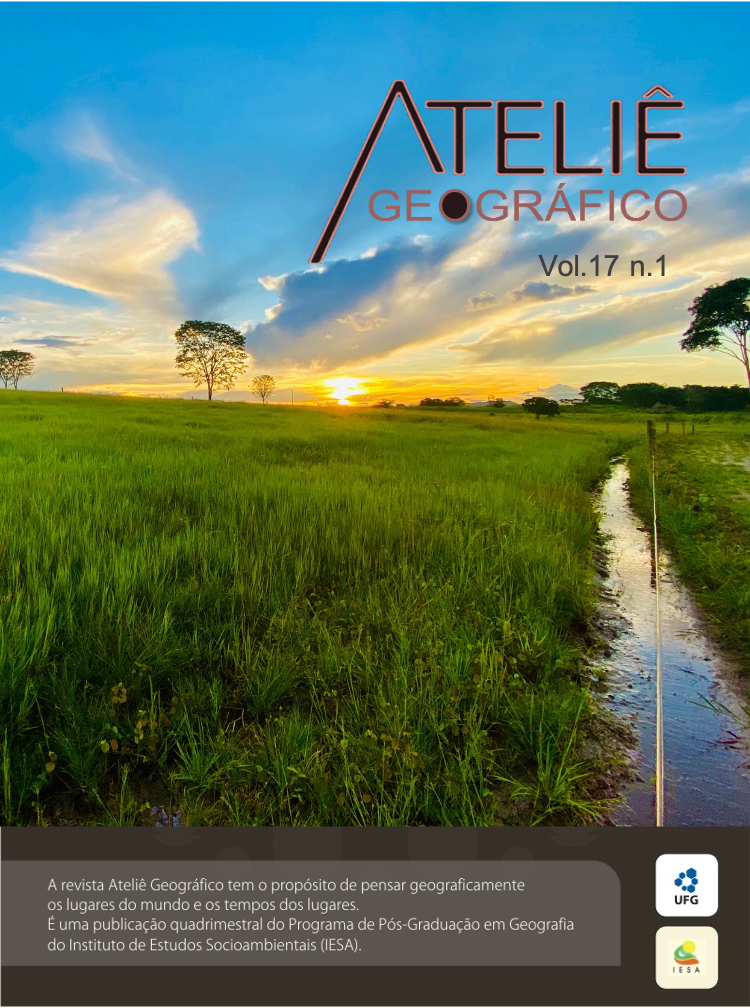Processes, forms and changes in the spatial pattern of the urban network in Goiás and Tocantins states and in the Federal District, Brazil
DOI:
https://doi.org/10.5216/ag.v17i1.75127Abstract
In the territories spanning Brazil’s Goiás and Tocantins states as well as the Federal District, the urban network has acquired simple and complex spatial forms. Its initial basic pattern has been replaced by a complex one through the introduction of new forms, such as Goiânia, Brasília and Palmas. These centres have become intersecting points in the network, responsible for the rupture of the previous pattern and the emergence of new ones via the differentiation between major centres and their flows, with specific inner and outer means of integration that lead to the network’s fragmentation and disintegration and the resulting restructuring of its segments. This article reveals temporal and spatial dynamics that enable the identification of old and new, simple and complex, endogenous and exogenous spatial forms; such forms are indicative of political, economic, and sociocultural processes that express the movement and changes of socio-spatial formation, hence altering and renewing spatial forms, including urban networks. The latter emerge as a unified and fragmented materiality, liable to be analysed through the complex dialectic between processes and forms as well as by the explanatory capacity of the integration-fragmentation and disintegration-restructuring dualisms.
Keywords: Urban network. Processes and forms. Technical networks.
Downloads
Downloads
Published
How to Cite
Issue
Section
License
Autores que publicam nesta revista concordam com os seguintes termos:- Autores mantém os direitos autorais e concedem à revista o direito de primeira publicação, com o trabalho simultaneamente licenciado sob a Licença Creative Commons Attribution que permite o compartilhamento do trabalho com reconhecimento da autoria e publicação inicial nesta revista.
- Os autores não serão remunerados pela publicação de trabalhos na Revista Ateliê Geográfico. Além disso, os conteúdos publicados são de inteira e exclusiva responsabilidade de seus autores, ainda que reservado aos editores o direito de proceder a ajustes textuais e de adequação às normas da publicação.
- Autores têm permissão e são estimulados a divulgar seu trabalho online (ex.: em repositórios institucionais ou na sua página pessoal), já que isso pode gerar alterações produtivas, bem como aumentar o impacto e a citação do trabalho publicado (Veja O Efeito do Acesso Livre).


